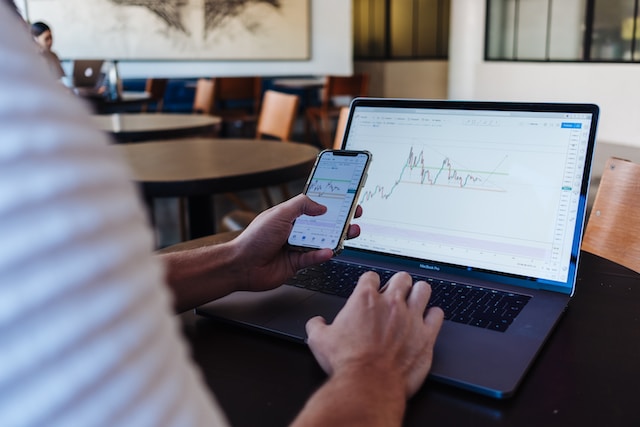
The Digital Transformation of Price Intelligence
Imagine walking into a marketplace where every price shift, every market nuance is instantly understood and strategically leveraged. Welcome to the world of price monitoring in 2025 – a sophisticated ecosystem where technology, data, and strategic insight converge to reshape how businesses understand and respond to market dynamics.
The Evolution of Price Tracking: From Manual to Intelligent
Price monitoring has dramatically transformed from manual spreadsheet comparisons to an intricate technological marvel. What once required hours of human labor can now be accomplished through intelligent systems that process millions of data points in milliseconds, providing unprecedented market visibility.
Understanding Modern Price Monitoring Architectures
The Technological Backbone of Price Intelligence
At its core, contemporary price monitoring represents a complex intersection of multiple technological disciplines. Web scraping, machine learning, big data analytics, and artificial intelligence work in concert to create a holistic understanding of pricing landscapes across diverse markets and industries.
Web Scraping: The Foundation of Modern Price Intelligence
Web scraping has emerged as the critical technology enabling real-time price tracking. Unlike traditional methods, modern web scraping tools can navigate complex website structures, overcome anti-bot mechanisms, and extract precise pricing information with remarkable accuracy.
Machine Learning: Transforming Raw Data into Strategic Insights
Machine learning algorithms have revolutionized price monitoring by introducing predictive capabilities. These sophisticated models can:
- Analyze historical pricing trends
- Identify complex market patterns
- Predict potential future price movements
- Generate actionable competitive intelligence
Key Technologies Driving Price Monitoring in 2025
Artificial Intelligence and Predictive Analytics
The integration of artificial intelligence has transformed price monitoring from a reactive to a proactive discipline. Advanced AI models can now:
- Understand contextual market signals
- Predict pricing trends with unprecedented accuracy
- Generate dynamic pricing recommendations
- Simulate complex market scenarios
The Mathematical Foundation
Price prediction models now utilize advanced mathematical frameworks, represented by complex algorithms like:
[P_t = f(X_1, X_2, …, X_n) + \epsilon]Where:
- [P_t] represents the predicted price at time t
- [X_1…X_n] are diverse market variables
- [\epsilon] represents potential prediction error
Distributed Computing and Real-Time Processing
Modern price monitoring platforms leverage distributed computing architectures, enabling:
- Simultaneous data collection across multiple sources
- Real-time processing of massive datasets
- Reduced latency in market intelligence generation
- Enhanced scalability and performance
Practical Implementation Strategies
Selecting the Right Price Monitoring Solution
When choosing a price monitoring tool, consider these critical factors:
- Data accuracy and coverage
- Integration capabilities
- Scalability
- Machine learning sophistication
- Cost-effectiveness
- Compliance and ethical considerations
Industry-Specific Approaches
Different industries require nuanced price monitoring strategies:
E-commerce
Focus on real-time marketplace tracking, competitor analysis, and dynamic pricing optimization.
Manufacturing
Emphasize raw material price fluctuations, supply chain intelligence, and global market trends.
Financial Services
Prioritize complex predictive modeling, risk assessment, and regulatory compliance.
Emerging Challenges and Innovative Solutions
Technical Limitations in Price Monitoring
Despite technological advancements, challenges persist:
- Website anti-scraping mechanisms
- Data normalization complexities
- Regional regulatory variations
- Rapid market transformations
Ethical Considerations and Data Privacy
As price monitoring technologies become more sophisticated, ethical frameworks become increasingly important. Responsible implementation requires:
- Transparent data collection methodologies
- Robust anonymization techniques
- Compliance with international privacy regulations
Investment and Strategic Perspectives
Economic Impact of Advanced Price Intelligence
Businesses investing in sophisticated price monitoring solutions can expect:
- Improved competitive positioning
- Enhanced pricing strategy development
- Reduced market entry risks
- Increased operational efficiency
Estimated ROI Metrics
Typical return on investment for advanced price monitoring solutions ranges between 200-350%, with potential annual savings of [$50,000 to $500,000] depending on industry and implementation scale.
Future Technological Trajectories
Predicted Innovations (2025-2030)
- Quantum computing integration
- Hyper-personalized pricing models
- Global market synchronization platforms
- Ethical AI-driven pricing intelligence
Conclusion: Navigating the Intelligent Pricing Landscape
Price monitoring in 2025 represents more than a technological tool – it‘s a strategic imperative. By embracing advanced technologies, maintaining ethical standards, and developing sophisticated analytical capabilities, businesses can transform raw data into powerful, actionable market intelligence.
Your Next Steps
- Assess current price monitoring capabilities
- Explore advanced technological solutions
- Develop cross-functional data intelligence teams
- Continuously adapt and innovate
The future of pricing strategy is intelligent, dynamic, and driven by cutting-edge technology. Are you ready to lead the transformation?










